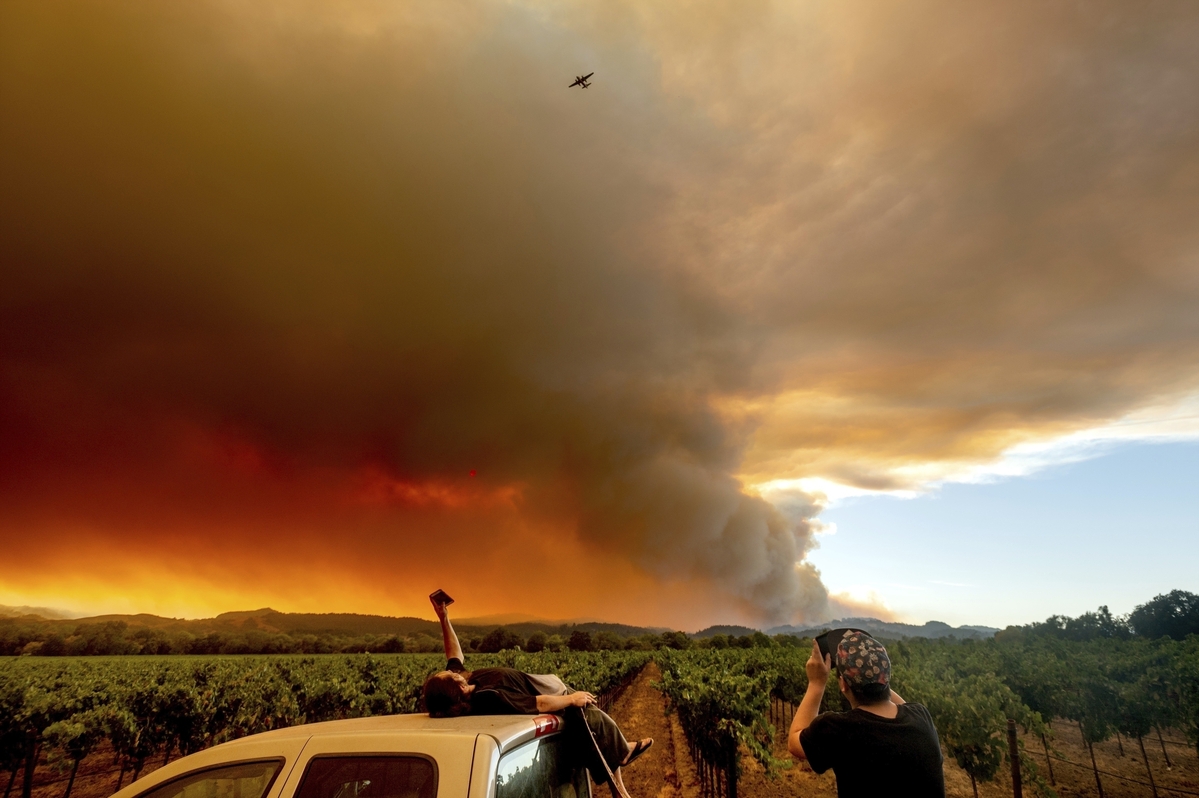Disasters remind us that we need to flatten the curve on emissions


Dire natural disasters have not gone away with many even making history while the COVID-19 pandemic wreaked havoc across the world in 2020.
Bushfires across Australia burned from late 2019 into early 2020, ravaging more than 115,000 square kilometers of drought-stricken bushland and forest. More than 30 people were killed and thousands of homes were destroyed.
Wild animals bore the brunt of the broadest and most prolonged bushfire season in modern Australian history. Nearly 3 billion animals, including 60,000 koalas, were killed, hurt, or displaced.
Record-breaking rains and floods in China swept large areas of its southeastern region, affecting more than 63 million people and inflicting a direct economic loss of 178 billion yuan ($27 billion) as of mid-August. The floods left more than 200 people dead or missing, with 54,000 houses destroyed.
Devastating wildfires are striking more often in the United States.
Data from the National Interagency Fire Center showed that 57,850 wildfires incinerated more than 4.1 million hectares across the US as of Dec 23.
Wildfires in California, the hardest-hit state, torched a record 1.74 million hectares, damaging or destroying more than 10,500 structures and killing at least 30 people.
Though they are called natural disasters, the toll they take comes in part from human activity.
Zhou Weidong, director of the World Business Council for Sustainable Development's office in Beijing, said extreme weather events are the visible consequences of an increasingly warming world, fueled by greenhouse gas emissions.
It is affecting the planet's life-sustaining systems, from the top of the mountains to the depths of the oceans, affecting ecosystems and human security, he said.
Climate change, apparently, has not stopped for COVID-19.
Emissions are heading in the direction of pre-pandemic levels following a temporary decline caused by widespread lockdowns. Greenhouse gas concentrations in the atmosphere are at record levels.
From 2016-20, the world experienced its warmest five years on record in a trend which is likely to continue. The world is not on track to meet agreed targets to keep temperature increases below 2 C or at 1.5 C above preindustrial levels, according to the United in Science 2020 report, compiled by the World Meteorological Organization, or WMO.
"This report shows that whilst many aspects of our lives have been disrupted in 2020, climate change has continued unabated," said WMO Secretary-General Petteri Taalas.
Even Antarctica, the most remote place on the planet, has not escaped global warming. Fossil fuel burning thousands of kilometers away is heating up the region faster than almost anywhere else.
























